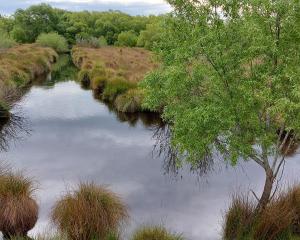The staircase of the crumbling, near-derelict building is inhabited only by a little kitten, which makes its way down gingerly, blissfully unaware of the home's sad history.
The building is part of the United Nations buffer zone between the north and south of Nicosia - the world's only divided capital city.
In the past, much of this thin strip across the city was prime real estate; the big houses where the richer Cypriots lived.
Now it is forever 1974, aside from the odd armed soldier walking through.
That was the year that Cyprus' tragic blame game started.
A Greek-sponsored coup was swiftly followed by a Turkish invasion and the island became divided (or "occupied" if you are a Greek Cypriot).
Years of political posturing and ruinous rhetoric further deepened the divide, reducing a once harmonious mix of Greek and Turkish people to mistrusting, oppositional forces.
The UN's Green Line across Nicosia is the ultimate symbol of this split, but there is finally hope on the horizon.
Walking along the line - past the military oil barrels, checkpoints and barbed wire - and staring into the past is a fascinatingly eerie experience.
But if progress continues to be made, it may not be necessary in a few years time.
This year has seen major developments.
First came the February election of Dimitris Christofias as president of the internationally recognised Republic of Cyprus (the southern part).
In contrast to the more belligerent previous incumbent, Tassos Papadopoulos, Mr Christofias' communist government has made looking for a solution to the Cyprus problem a priority.
The language has shifted from blame-laying to peacemaking, too.
Government spokesman Stefanos Stephanou said: "One of the sicknesses is referring to the past. Politicians have preferred to look for the responsibility of the others.
"Hard-liners on both sides created problems. Not any more.
"The two communities have made a lot of mistakes and crimes in the past. We have to recognise those mistakes and crimes and try to move forwards."
The second major move came shortly afterwards, when a crossing within Nicosia's remarkable flower-shaped city walls opened up for the first time in 34 years.
Other crossings of the island-wide buffer zone have been open since 2003, when many Cypriots returned to their home towns for the first time in three decades.
However, the new one at Ledra St offers a clearly visible glimpse of what might be.
The streets either side end in barriers, with perhaps a dismal bar or two, or a row of dusty workshops.
But Ledra St is booming.
On the southern side, there are cafés and stylish clothing stores; the marks of a thoroughly modern European city.
The stroll past the police checkpoint and thoroughly bored-looking border guards leads to the Turkish take on things.
Souvenir stalls, bars selling Turkish beers and an Eastern flavour dominate, but the pedestrianised strip is clearly rejuvenated and awash with money.
The lesson has not been lost on the people; removing a barrier that has kept a generation apart has led to instant prosperity.
How far could Cyprus go if the rest of the Green Line came down?The northern side of the city is probably more interesting from a tourist's perspective.
There are far fewer multinational chains and the buildings are more inspiring.
The Selimiye Mosque dominates the city's skyline, even from the other side of the buffer zone, while the markets have a bazaar-like feel.
Best of all is the Buyuk Han, the grand old Ottoman inn from 1572.
It has a castle-like look, but the huge courtyard among the archways has now been turned into a bustling collection of cafés, arty workshops and stalls selling traditionally-made handicrafts. - David Whitley
The writer was a guest of the Cyprus Tourism Organisation (www.cyprus.com).












